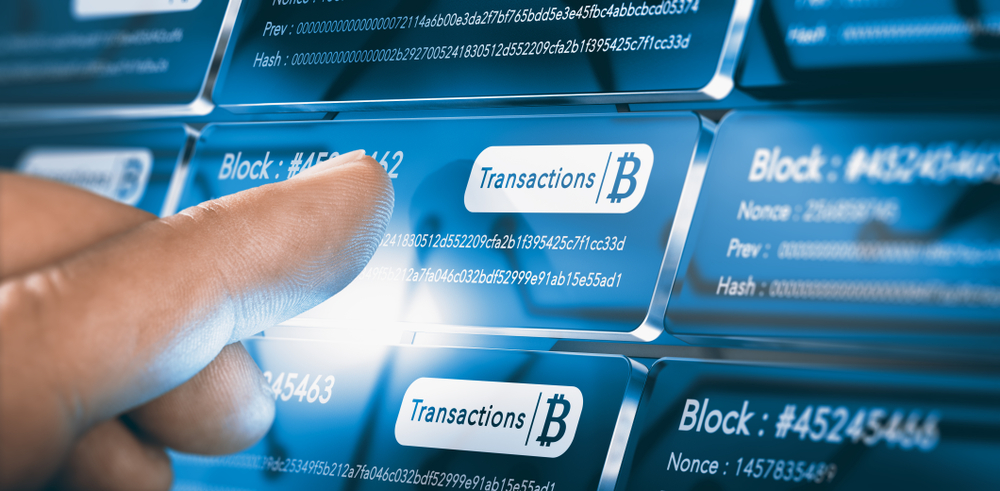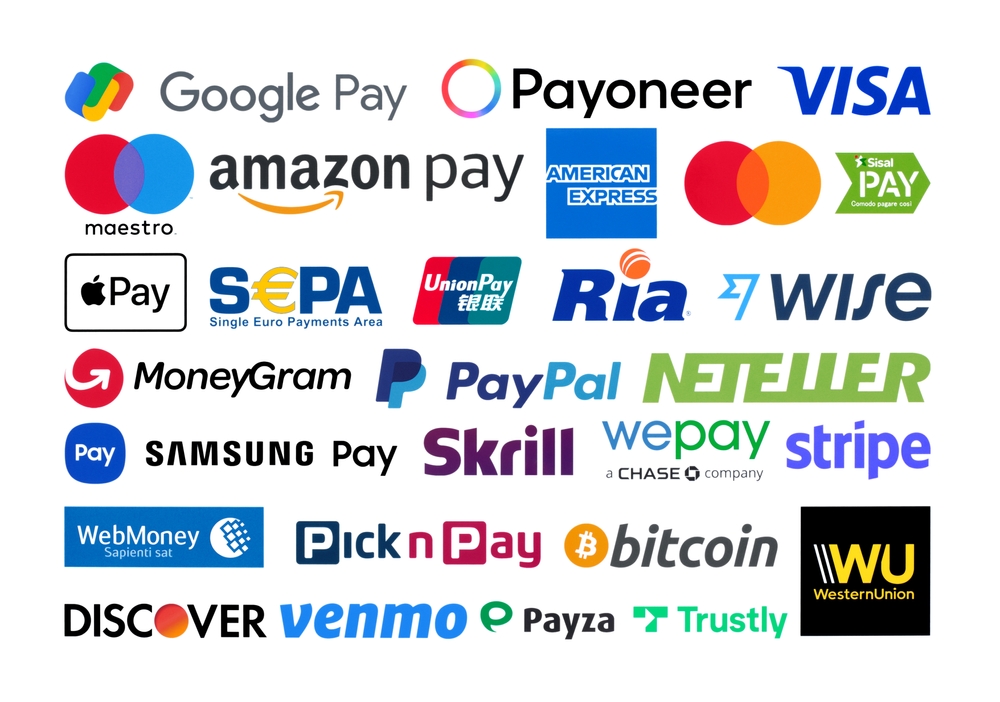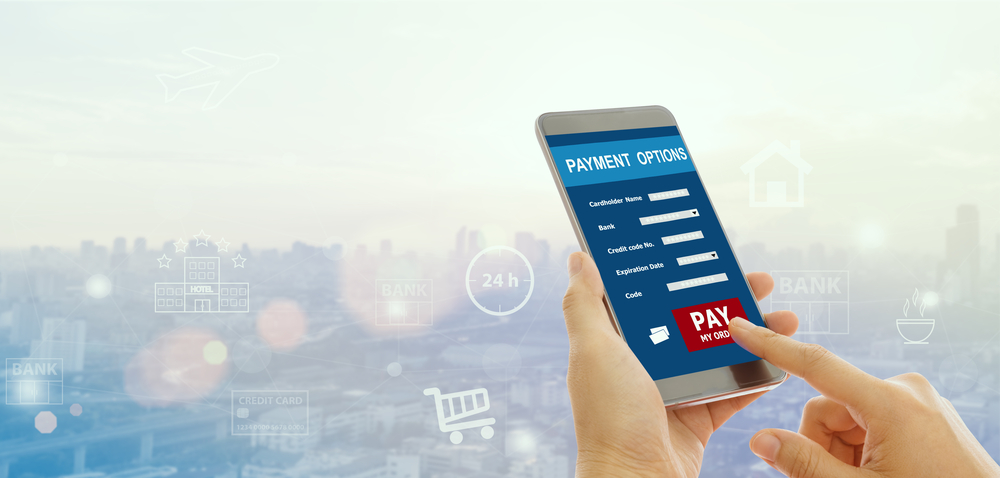For merchants focused on enhancing the online shopping experience, the question “what is a digital wallet?” is central to unlocking the potential of their eCommerce platforms. In today’s digital commerce environment, the consumer experience has taken center stage as a critical factor in building a successful online business. Customers expect not only high-quality products and services but also a seamless journey from the moment they land on an eCommerce site to the finalization of their purchase.
A streamlined checkout process is vital because it serves as the final step in the buyer’s journey and is where potential sales are either won or lost. An overly complicated or time-consuming payment process can lead to frustration, and ultimately, cart abandonment.
The average cart abandonment rate across all industries is 70.19%, and a significant portion of these abandonments are due to a long or complicated checkout process. As you embark on the journey through the digital marketplace, understanding the mechanics and advantages of digital wallets is essential for any savvy merchant looking to refine their checkout process and cater to the modern consumer’s needs.
What Are Digital Wallets?
A digital wallet, also known as an e-wallet, is an electronic device or online service that allows an individual to make electronic transactions. This can include purchasing items on-line with a computer or using a smartphone to purchase something at a store. It can store multiple credit card and bank account numbers in a secure environment and eliminate the need to enter account information when making a payment.
Historical Evolution of Digital Wallets
The concept of digital wallets dates back to the late 1990s with advancements in mobile and internet technology. However, it wasn’t until the rise of smartphones and secure mobile internet access in the 2000s that digital wallets truly found their footing. The evolution from basic online payment services to sophisticated digital wallets has been driven by the need for speed, convenience, and security in financial transactions. Significant milestones in the development of digital wallets include the launch of platforms followed by the introduction of mobile-centric solutions like Apple Pay and Google Pay that harness the power of NFC technology.
Distinction Between Digital Wallets and Traditional Payment Methods
Unlike traditional payment methods such as cash and checks, digital wallets offer benefits such as several layers of security. Here is a closer look at how they differ:
- Physical vs. Electronic: Traditional payment methods require physical instruments such as cash or credit cards, whereas digital wallets are entirely digital and do not require any physical exchange.
- Convenience: Digital wallets reduce the need to carry multiple cards or cash and streamline transactions into a seamless, quick tap or click.
- Security: While traditional methods can be lost or stolen with all the information available, digital wallets often secure information behind password protection, biometric scans, or other security measures.
- Transaction Speed: Transactions with digital wallets can be completed much faster than those requiring card swiping, chip insertion, or cash handling.

How to Use Digital Wallet Technology in eCommerce
Digital wallets rely on a sophisticated technology to provide secure and efficient transactions. Here, we explore three key mechanisms at work:
- Encryption: At the heart of digital wallet security is encryption—a process that protects sensitive information by converting it into a code that can be deciphered only by the intended recipient. Specifically, digital wallets often use Secure Sockets Layer (SSL) encryption, which establishes an encrypted link between a server and a client—typically a web server (website) and a browser; or a mail server and a mail client (e.g., Outlook).
- Cloud Storage: Users’ financial data is stored in the cloud, meaning it’s hosted on servers and protected by the digital wallet provider’s security measures. This approach not only safeguards information but also allows users to access their wallets from any device with an internet connection, thus enhancing usability.
- Near-Field Communication (NFC): NFC technology is essential for contactless payments—a feature widely used in physical retail environments. This technology enables two devices—a smartphone and a payment terminal—to communicate when they are close together, typically a few centimeters apart.

The Transaction Process: A Step-by-Step Breakdown
To clarify how to use digital wallets during transactions, consider the following sequence:
- User Authorization: The shopper selects the digital wallet as their preferred payment method and authenticates their identity via a password, PIN, fingerprint, or facial recognition.
- Data Retrieval: The digital wallet retrieves the user’s encrypted payment information from the cloud storage. It then generates a one-time code or token that represents the user’s payment details.
- Transmission of Payment Token: This token gets transmitted to the merchant’s payment gateway via NFC or another secure communication method when the payment is initiated.
- Payment Gateway Processing: The payment gateway receives the token and forwards it to the payment processor.
- Bank Authorization: The payment processor communicates with the bank or card network associated with the digital wallet to approve the transaction.
- Confirmation of Transaction: Once the payment is authorized, a confirmation is sent back through the chain to the digital wallet, and the transaction is completed.
- Notification: The user receives a notification that the payment was successful, typically through an app notification or an email.
Integration with Online Shopping Platforms
Digital wallet technology is aimed to work harmoniously within the digital ecosystem of an eCommerce platform. Here’s how they integrate:
- Shopping Cart Compatibility: Digital wallets are compatible with most modern shopping cart systems. They appear as a payment option alongside credit cards, debit cards, and other payment methods.
- Payment Gateway Integration: Digital wallets are integrated with payment gateways, so when a customer chooses to pay with a digital wallet, the transaction is processed using the wallet’s unique protocols.
- Backend Synchronization: Transactions are recorded in both the retailer’s and user’s digital wallet transaction histories, allowing for easy tracking and account reconciliation.
By weaving together encryption, cloud storage, and NFC, the technology used by digital wallets not only offers a fortified payment mechanism but also a user-friendly experience that is reshaping consumer behavior in the eCommerce realm. Their ability to mesh with shopping carts and payment gateways underscores their fundamental role in modern commerce, providing an unobtrusive yet secure payment process.

How Does Digital Wallet Work for Online Purchases
The digital wallet has revolutionized the online purchasing landscape, offering faster and secure means of conducting transactions.Next, we’ll explore how to effectively use digital wallets for online purchases, offering clarity on setting up an account, managing payment methods, and executing transactions on various devices.
Setting Up a Digital Wallet Account
In order to set up a digital wallet account you must follow these steps:
- Choose Your Preferred Digital Wallet: Begin by selecting a digital wallet service that caters to your needs. Look for compatibility with your device, the currencies you use, and evaluate the security measures offered by the service. Services like PayPal, Apple Pay, and Google Pay are popular choices with robust security and wide acceptance.
- Create an Account: Visit the digital wallet provider’s website or download their app. Provide necessary information including your name, email address, and a secure password. Successful creation often requires email verification.
- Verify Your Identity: Some wallets may require additional verification steps to comply with financial regulations. This could include uploading a government-issued ID or linking your digital wallet to an existing bank account.
- Configure Security Settings: Activate security features such as two-factor authentication, biometric logins, or security questions to enhance the protection of your account.
Adding Payment Methods to a Digital Wallet
Adding a payment method to your digital wallet is easy if you follow these simple steps:
- Link Bank Accounts or Cards: Within the digital wallet app or website, there is usually an option to ‘Add a payment method.’ Enter the details of your bank account, credit, or debit card as prompted. This process typically involves authenticating the payment source to confirm ownership.
- Consider Multiple Payment Sources: For greater flexibility, add multiple payment methods. This could include credit cards, debit cards, bank accounts, or even cryptocurrencies if supported by the wallet provider.
- Set a Default Payment Method: Most digital wallets allow you to designate a default payment method for transactions, choosing the one that best suits your spending habits or provides optimal rewards and benefits.
Making Purchases on Desktop and Mobile Devices with Digital Wallets
When shopping online via a desktop browser, select the digital wallet option at checkout. Then, log in to your digital wallet when prompted and confirm the transaction. Ensure that the website is secure and that the URL starts with ‘https://’ to prevent unauthorized data interception.
If you are on a smartphone or tablet, using a digital wallet can often be even more convenient. Apps on mobile devices can typically access the digital wallet directly, streamlining the checkout process. Select the wallet at checkout, authenticate (often with a fingerprint or face scan), and confirm payment.
For purchases within mobile applications, the process is generally similar to mobile browser purchases. Choose the digital wallet as your payment method in the app’s payment section and authenticate the transaction to finalize the purchase.
After selecting your payment method and delivery options, review your order thoroughly before confirming. Digital wallets will usually display a summary screen allowing you to double-check the transaction details. Following a successful payment, you will receive a confirmation — often both in the digital wallet app and via email. Monitor these notifications as they serve as a record of the transaction and can be helpful for tracking spending or addressing any issues that arise.
By adhering to these steps, consumers can optimize their online shopping experience using digital wallets. From setup to transaction completion, digital wallets streamline the purchasing process, often making transactions faster and more secure than traditional methods.

Benefits of Digital Wallet Apps for eCommerce
Digital wallet applications have emerged as a cornerstone technology, enhancing the shopping experience for customers and serving as a strategic advantage for merchants. Below, we explore the various benefits that digital wallet apps confer on the vast spectrum of eCommerce activities.
Convenience and Accessibility
The digital transformation of commerce has been largely driven by the need for greater convenience, which digital wallets deliver in abundance. Wallet apps allow customers to store multiple payment methods in a single, organized interface. This consolidation means that shoppers can select their preferred payment method with just a few clicks or taps when making a purchase.
Multi-Device Compatibility
One of the greatest strengths of digital wallets is their cross-device functionality.
- Desktop to Mobile: Digital wallets transcend the limitations of a single device. Whether one shops on a desktop computer or uses a mobile device, the payment process is equally smooth and uniform, offering a cohesive experience.
- Digital Wallet on iPhone and Other Smartphones: Wallet apps are particularly well-optimized for smartphones. For instance, Apple Pay users can enjoy a seamless checkout on their iPhones or iPads, leveraging the integrated Apple ecosystem. Similarly, Android users benefit from the ubiquity of Google Pay, which is available on most Android devices.
Enhanced Security Measures
As mentioned earlier, when it comes to online transactions, security is paramount. Digital wallet apps have set a new standard for secure payments thanks to a multi-layered approach that protects sensitive information. Wallet apps use robust encryption and tokenization methods, which encode data into unreadable formats that can only be decrypted with a specific key or token. This ensures that customer payment information is not easily accessible by unauthorized parties.
Biometrics also offers a personal layer of security that is extremely difficult to replicate. Fingerprint recognition provides a quick and secure way to authorize payments. This feature is widely available across smartphone-enabled digital wallets. Also, advanced technology like Apple’s Face ID allows users to authenticate transactions simply by looking at their device, combining convenience with high security.
Streamlined Checkout Process
A frictionless checkout process is one of the central benefits that wallet apps offer, directly impacting customer satisfaction and sales.
Digital wallets significantly reduce the number of steps required to complete a purchase. With pre-stored payment information, customers can bypass the often tedious task of entering card details for every transaction. Features like one-touch or one-click payments mean that customers can finalize a purchase almost instantaneously, leading to a smoother and faster shopping experience.
Cart abandonment is a persistent challenge in eCommerce. Digital wallets address this issue by minimizing the friction that causes customers to leave without completing their purchases. The rapid checkout capabilities of digital wallet apps reduce the time customers spend at the payment stage, which is a critical factor in keeping abandonment rates low. The effortless nature of the payment process with digital wallets means that customers are less likely to experience frustration or fatigue, which can often lead to abandoning a cart.
The strategic integration of digital wallet apps into eCommerce platforms represents a transformative step towards optimizing the online shopping journey. By delivering increased convenience, bolstering security measures, and refining the checkout process, digital wallets not only enhance the consumer experience but also present significant advantages for merchants looking to grow their business in the digital landscape.

Key Factors When Selecting a Digital Wallet for eCommerce
When choosing a digital wallet for your online store, ensuring its compatibility with a wide range of devices and operating systems is critical. Compatibility impacts the user experience significantly, determining how smoothly customers can access and utilize the wallet for transactions.
Support for iOS and Android
iOS Support: For a digital wallet on an iPhone, the app must be optimized for the iOS operating system. This integration usually means that the wallet can leverage Apple’s ecosystem, offering features such as Apple Pay which provides easy transactions via Safari or in-app purchases. It’s essential to understand how the digital wallet utilizes Touch ID or Face ID for authentication, a feature that’s particularly appealing to iPhone users.
Android Support: Android users represent a substantial portion of the market, and a digital wallet needs to cater to this audience effectively. Look for digital wallets that can integrate with Google Pay or offer an interface that is well adapted to the multitude of devices that run Android OS. It should be able to handle the different screen sizes and resolutions as well as the various versions of the operating system.
The goal is to find a digital wallet that provides seamless and intuitive functionality on both platforms, allowing users to manage their payment information and complete purchases easily regardless of their preferred device.
Accepted Payment Methods
A versatile digital wallet should support a comprehensive array of payment methods to cater to the diverse preferences of consumers. Here are some payment options that should ideally be supported:
- Credit and Debit Cards: The wallet should allow users to store multiple card details securely.
- Bank Transfers: Some consumers prefer direct bank transfers, and a digital wallet integrating this feature can be a plus.
- Mobile Payments: This includes carrier billing options where purchase amounts are charged directly to the user’s phone bill.
- Cryptocurrencies: With the growing interest in digital currencies, accommodating this trend could set a digital wallet apart.
By including a broad selection of payment methods, a digital wallet can appeal to a wider customer base, accommodating different shopping habits and financial practices.
Security Features
The protection of customer data is paramount in the digital age, and a digital wallet’s security features are a high-priority consideration. Below are critical security aspects you should expect from a digital wallet:
- End-to-end Encryption: This security measure encrypts data from the moment it’s sent until it’s received, ensuring that the transaction details remain confidential and tamper-proof. Look for digital wallets that utilize industry-standard encryption protocols like SSL and TLS.
- Tokenization: Instead of storing sensitive card information, tokenization replaces it with a unique identifier or “token”. This token is used to process transactions without exposing actual card details, considerably reducing the risk of data breaches and fraud.
- Multi-Factor Authentication (MFA): MFA adds an additional layer of security by requiring two or more verification factors, which could include something the user knows (password), something the user has (a smartphone), or something the user is (biometric verification).
The integration of these security features ensures that digital wallets can provide robust protection for users, fostering trust and confidence in your eCommerce platform.
Integration with Traditional and Alternative Payment Modes
Lastly, any eCommerce business should consider how well a digital wallet integrates with both traditional (credit cards, debit cards, direct bank transfers) and alternative (mobile payments, digital currencies) payment methods. Seamless integration means that your customers can use the wallet alongside existing payment infrastructures and emerging technologies without friction.
The wallet should complement conventional payment options, not replace them, allowing customers to choose their preferred method at checkout. With the rise of alternative payment methods, including peer-to-peer platforms and blockchain-based currencies, a forward-thinking digital wallet should be ready to adapt to these innovations and integrate them into its ecosystem.
The choice of a digital wallet can significantly influence the shopping experience on your eCommerce site. By thoroughly assessing each of these considerations, you can select a digital wallet solution that not only meets the current needs of your business and your customers but is also prepared for future advancements in payment technology.

The Best Digital Wallets for eCommerce
Selecting the most suitable digital wallet is crucial for eCommerce businesses aiming to provide a hassle-free checkout experience to their customers. In this section, we will examine some of the leading digital wallets, analyzing their features, and why they are favored in the eCommerce industry.
Apple Pay
Built-in for Apple Devices: With a vast base of dedicated users, Apple Pay caters to a significant segment of the market. Pre-installed on all new Apple devices, it provides a seamless and secure way for customers to make purchases using Touch ID or Face ID.
Privacy-Centric: Apple Pay emphasizes user privacy, with no storage of transaction information that can be tied back to the user. This focus on data security is particularly appealing in an era where privacy concerns are paramount.
Frictionless Transactions: The simplicity of completing a purchase with just a fingerprint or facial recognition offers unmatched convenience, potentially reducing cart abandonment and increasing conversion rates.
Google Pay
Versatility for Android Users: Google Pay is a versatile option that is compatible with a wide range of Android devices. Its integration with other Google services, like Gmail and Google Assistant, allows for innovative features such as sending money through email or voice commands.
User-Friendly Interface: Google Pay’s user interface is simple and intuitive, enabling quick payment with minimal steps. The ease of use can enhance the overall shopping experience and encourage repeat business.
Reward System: By providing incentives such as cashback offers and rewards for transactions, Google Pay keeps users engaged and inclined to use the service repeatedly. This can be beneficial for merchants looking to increase customer loyalty.
Samsung Pay
Unique Technology and Rewards Program: Samsung Pay stands out with its Magnetic Secure Transmission (MST) technology, which allows it to work even on traditional card swipe machines. This broadens the scope of acceptance, making it an attractive choice for customers who favor omnichannel shopping experiences.
Integration with Samsung Devices: As the native payment option for one of the most popular smartphone brands, Samsung Pay comes pre-installed on Samsung devices. Its deep integration with the brand’s ecosystem can drive usage among Samsung loyalists.
Customer Loyalty Incentives: Samsung Pay’s rewards program incentivizes users with points for every transaction, which can be redeemed for a range of benefits. This encourages continued use and can lead to higher customer retention rates for eCommerce sites that accept it.
By incorporating these digital wallets into their payment strategies, eCommerce businesses can cater to a wide array of customer preferences, streamline the checkout process, and ultimately enhance their chances of success in the competitive online marketplace. It’s essential to analyze each option and choose the one that aligns best with the target customer base and business objectives.
Future Trends in Digital Wallet Utilization
The landscape of digital payment solutions is rapidly evolving, with digital wallets at the forefront of this financial revolution. As we look towards the future, several trends are poised to reshape consumer shopping behaviors and digital wallet technology.
Transforming Shopping Habits through Digital Wallets
Digital wallets are changing the way people shop in many ways. Let’s take a look how the future looks like regarding shopping habits:
- Frictionless Purchasing: In the future, digital wallets are expected to create an increasingly frictionless purchasing journey. By integrating with various eCommerce platforms and streamlining the authentication process, digital wallets will make it easier for consumers to complete transactions without the need for manual data entry. This could lead to a ‘one-click’ shopping environment where purchases are completed with unprecedented speed and simplicity.
- Voice-Activated Transactions: The integration of voice recognition technology is likely to become more prevalent in digital wallets. Services like Amazon’s Alexa, Apple’s Siri, and Google Assistant may soon allow for voice-initiated payments, making the purchasing process as simple as issuing a spoken command.
- Personalized Shopping Experiences: Leveraging artificial intelligence (AI), digital wallets might offer personalized shopping experiences by analyzing consumer behavior and preferences. This could include customized deals, preferred payment options, and even predictive purchasing, where the wallet suggests reordering products before they run out.
- Social Commerce Integration: The convergence of social media and eCommerce, known as social commerce, may also be a significant area of growth. Digital wallets could integrate with social media platforms, allowing users to make purchases directly from their social feeds without having to navigate to an external website.
Innovations in Digital Wallet Technology
Digital wallet technology is transforming the payment landscape, bringing up various innovations such as:
- Cryptocurrency Integration: As the cryptocurrency market matures, digital wallets are expected to support a broader range of cryptocurrencies as standard options for payment. This development will cater to the growing demand for crypto transactions in the mainstream marketplace.
- Enhanced Security with Blockchain: Blockchain technology is anticipated to play a crucial role in the security aspect of digital wallets. Its decentralized nature means that transaction records are tamper-evident and traceable without relying on a central authority, providing an additional layer of security and transparency.
- Augmented Reality Shopping: Augmented reality (AR) is set to transform the shopping experience, with digital wallets enabling in-app purchases directly from an AR environment. For example, consumers could use their smartphones to visualize a piece of furniture in their home and pay for it instantly through their digital wallet.
- IoT and Payment Automation: The Internet of Things (IoT) could bring about the next wave of digital wallet innovation by automating payments for services and consumables. From smart appliances that reorder supplies to vehicles that pay for their own fuel, digital wallets will become the facilitators of automated transactions.
- Cross-Border Payments: Future innovation may also see digital wallets simplifying cross-border payments, eradicating the complexities and fees typically associated with currency conversions and international transactions. This will be particularly advantageous for businesses and individuals who engage in global eCommerce.
- Interoperability Between Wallets: The future may hold a more interoperable ecosystem for digital wallets, where users can smoothly transfer assets between different wallets without friction. This would support a more cohesive digital economy, where users are not siloed within one provider’s system.
By staying abreast of these future trends, consumers and businesses alike can prepare to adapt to the next generation of digital wallet utilization, ensuring they remain competitive in a technologically advancing marketplace.
It’s important to note that these projections are based on current technological trends and market analysis. Changes in regulations, consumer behavior, and technological breakthroughs will continually shape the trajectory of digital wallet developments.

Digital Wallets for Checkout Success
The digital landscape has unmistakably shifted towards speed, convenience, and security – central tenets that digital wallets exemplify. By integrating digital wallets, eCommerce platforms can offer a smooth payment experience that supports robust security measures and caters to the high expectations of today’s digital shoppers.
After exploring the transformative role of digital wallets in the eCommerce world, it’s time to streamline your checkout process and secure your transactions with Bankful. Our digital wallet solutions directly answer the call for speed, convenience, and heightened security in online shopping. Consider exploring Bankful’s digital wallet solutions for a more efficient and secure online shopping experience.
What are digital wallets?
Digital wallets are services that provide a digital version of a wallet, storing payment information like credit cards and bank details in an electronic form. They are accessed via mobile apps or online platforms, offering a convenient and secure way to handle financial transactions without the need for physical cards or cash, thus enhancing the shopping and payment experience for online and in-store purchases.
How to use a digital wallet?
To use a digital wallet, first, download a digital wallet app on your mobile device or access a wallet service through a website. Once installed, add your payment details, such as credit or debit card information, into the app. When making a purchase, select the digital wallet as your payment method and authenticate the transaction, often with a passcode or biometric verification such as a fingerprint or facial recognition. The app will generate a secure token to process the payment without exposing your actual card details.
What types of applications are considered digital wallet apps?
Digital wallet apps are applications installed on a mobile device that act as a virtual wallet to store your payment information. These apps allow you to make payments, transfer money, and even receive funds. Some popular examples of digital wallet apps include Apple Pay, Google Pay, and Samsung Pay, each offering various features and benefits to facilitate transactions and manage finances on the go. Bankful integrates with the three of them in case you need a merchant account.
What is a digital wallet on an iPhone?
A digital wallet on an iPhone typically refers to Apple Pay, which is a mobile payment system built into iOS devices. Users can add their credit, debit, or prepaid cards to the Wallet app on their iPhone to make secure purchases in stores, within apps, and on websites. It leverages Touch ID or Face ID for authentication and ensures that payment information is kept private and secure during transactions.
How does a digital wallet work?
A digital wallet works by securely storing users’ financial information, such as credit card numbers and bank account details. When making a purchase, the digital wallet will provide a token, a unique, encrypted code, representing the payment details. This token is sent to the merchant’s payment gateway to process the transaction. The actual financial details are never exposed directly, enhancing the security of the transaction. Users typically authenticate payments through PINs, passwords, or biometric identifiers like fingerprints.

